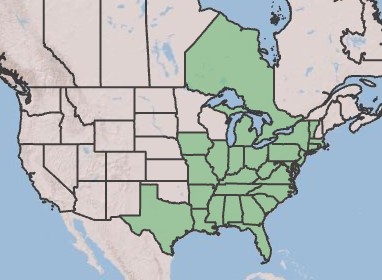Difference between revisions of "Liriodendron tulipifera"
(→Taxonomic Notes) |
(→Ecology) |
||
| Line 28: | Line 28: | ||
==Distribution== | ==Distribution== | ||
==Ecology== | ==Ecology== | ||
| − | + | ===Habitat=== | |
| + | ''L. tulipifera'' occurs in mesic soils of floodplains, swamp borders, bottomland hardwood forests, cedar swamps, hickory-magnolia-oak forests, lower ravine slopes, pine-hardwood forests, fire deprived pine flatwoods, and along rivers and streams. It has been found growing in sandy loam and loamy sand.<ref name = fsu> Florida State University Robert K. Godfrey Herbarium database. URL: http://herbarium.bio.fsu.edu. Last accessed: June 2023. Collectors: Loran C. Anderson, Joy M. Brown, Richard Carter, Dorothy L. Fuller, Robert K. Godfrey, Mary G. Henry, Ed Keppner, Lisa Keppner, Karen MacClendon, Travis MacClendon, Elmer C. Prichard, Annie Schmidt, and Wayne Webb. States and counties: Florida: Bay, Calhoun, Gadsden, Holmes, Jackson, Jefferson, Leon, Liberty, Santa Rosa, and Seminole. Georgia: Grady, Taylor, and Thomas.</ref> | ||
| + | |||
| + | Associated species of ''L. tulipifera'' include ''Quercus shumardii'', ''[[Quercus nigra]]'', ''Quercus muehlenbergii'', ''[[Magnolia virginiana]]'', ''Chamaecyparis thyoides'', ''[[Acer rubrum]]'', and ''[[Nyssa biflora]]''. | ||
<!--===Phenology===--> <!--Timing off flowering, fruiting, seed dispersal, and environmental triggers. Cite PanFlora website if appropriate: http://www.gilnelson.com/PanFlora/ --> | <!--===Phenology===--> <!--Timing off flowering, fruiting, seed dispersal, and environmental triggers. Cite PanFlora website if appropriate: http://www.gilnelson.com/PanFlora/ --> | ||
<!--===Seed dispersal===--> | <!--===Seed dispersal===--> | ||
Revision as of 14:08, 19 June 2023
| Liriodendron tulipifera | |
|---|---|
| Scientific classification | |
| Kingdom: | Plantae |
| Division: | Magnoliophyta - Flowering plants |
| Class: | Magnoliopsida - Dicotyledons |
| Order: | Magnoliales |
| Family: | Magnoliaceae |
| Genus: | Liriodendron |
| Species: | L. tulipifera |
| Binomial name | |
| Liriodendron tulipifera Linnaeus | |

| |
| Natural range of Liriodendron tulipifera from USDA NRCS [1]. | |
Common name: tuliptree, yellow poplar, whitewood, Florida tulip-tree, coastal plain tulip-tree, southern yellow poplar
Contents
Taxonomic Notes
Synonyms: none[1]
Varieties: Liriodendron tulipifera Linnaeus var. 1.; Liriodendron tulipifera Linnaeus var. tulipifera[1]
Description
Distribution
Ecology
Habitat
L. tulipifera occurs in mesic soils of floodplains, swamp borders, bottomland hardwood forests, cedar swamps, hickory-magnolia-oak forests, lower ravine slopes, pine-hardwood forests, fire deprived pine flatwoods, and along rivers and streams. It has been found growing in sandy loam and loamy sand.[2]
Associated species of L. tulipifera include Quercus shumardii, Quercus nigra, Quercus muehlenbergii, Magnolia virginiana, Chamaecyparis thyoides, Acer rubrum, and Nyssa biflora.
Conservation, cultivation, and restoration
Cultural use
Photo Gallery
References and notes
- ↑ 1.0 1.1 Weakley, A.S. 2020. Flora of the Southeastern United States. Edition of 20 October 2020. University of North Carolina at Chapel Hill, Chapel Hill, North Carolina.
- ↑ Florida State University Robert K. Godfrey Herbarium database. URL: http://herbarium.bio.fsu.edu. Last accessed: June 2023. Collectors: Loran C. Anderson, Joy M. Brown, Richard Carter, Dorothy L. Fuller, Robert K. Godfrey, Mary G. Henry, Ed Keppner, Lisa Keppner, Karen MacClendon, Travis MacClendon, Elmer C. Prichard, Annie Schmidt, and Wayne Webb. States and counties: Florida: Bay, Calhoun, Gadsden, Holmes, Jackson, Jefferson, Leon, Liberty, Santa Rosa, and Seminole. Georgia: Grady, Taylor, and Thomas.